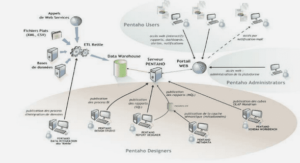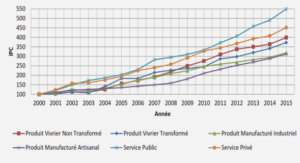Improving the regulatory framework and the supervision of the financial sector in the EU. Supervisory architectures
The topicality of the issue of the structure of the supervisory processes always increases during crises, even more so as that is the time when most allocations of supervisory responsibilities at the institutional level are carried out. At the current stage, in contrast to previous financial crises, the discussion is of global nature. The coordination at the international level is raised as a priority, given that internationally active financial institutions (mainly banks) have a global reach through their subsidiaries and an international branch network .
This chapter presents an analysis of the national supervisory structures in EU Member States in recent years, as well as their institutional development. The emphasis has been placed on the most common types of supervisory architectures, taking into account their positive and negative sides. A number of factors determine their varied structure across countries. Experience shows that we almost never come across systems that are fully complying with a single theoretical model. The economic structure often does not play a significant role in the allocation of supervisory responsibilities; a decisive role is played by the established traditions, historical development, and sometimes purely non-economic factors. In recent years, however, the tendency is for a more intense involvement of Central banks in the supervision process at the micro- and macro-level, where this is accomplished mainly by returning the function of banking supervision on a consolidated basis to the Central bank, which is dictated by the importance of these institutions as regards the systemic risk and the role of the Central bank in maintaining financial stability (Masciandaro et al., 2009; Masciandro & Quintyn, 2009).
The development of supervisory processes at the European level is directly related to the priority to establish the Single European Financial Market, raised in 1999. The financial crisis forced a reconsideration of the structure of financial supervision and regulation at the European level, by boosting initiatives for its improvement. The leaders of the G-20 agreed on the need to transform the financial institutions and in particular to increase the regulation of the financial system. That transformation opens up new opportunities for prevention based on early warning systems, and for ensuring the sustainability and viability of the financial institutions system.
The issues related to institutional development of supervisory architectures in EU Member States are determined by the need for faster overcoming of the crisis in the financial sector.
Types of supervisory architectures and their advantages and disadvantages
The supervisory process includes micro-level activities on individual bank and non-bank financial institutions and the function of maintaining the financial stability at the macro-level. The micro-level supervision has two functions – supervision and regulation of the stability of individual financial institutions and the so-called supervision of the business practices of financial institutions. The process of supervision and regulation of the stability of financial institutions seeks to ensure the solvency and viability of individual financial institutions, which is achieved by stimulating rational behavior on the part of the executives of the financial institutions, primarily through supervising the capital adequacy, liquidity, maintenance of certain risk management systems, limitations on large exposures, etc. The supervision of business practices includes supervision of the transparency and disclosure of information by financial institutions, fair attitude towards their customers and consumer protection.
Types of supervisory architectures
Several models of organization of supervisory structures can be identified on a global scale: vertical model (sectoral model), horizontal model (« twin peaks » model) and the unified model (a single supervisor). The vertical model follows the boundaries of the financial system in the different economic sectors, and each sector is governed by a different institution.
The horizontal model is structured by taking into account the different orientations of the regulatory and supervisory process, where an individual institution is responsible for each orientation. A variant is the so-called « twin peaks » model in which the regular supervision of individual financial institutions (micro-level supervision) and the function of maintaining financial stability (macro-level supervision) is performed by one institution, and the supervision of business practices – by another.
In the case of the unified model, one institution integrates the supervision of all sectors of the financial market and all regulatory purposes. It should be noted, however, that in this case the regulatory activities are performed by separate institutions – the Central bank or the Ministry of Finance .
Some of the key factors affecting the shaping of the supervisory architecture in a country are the structure of the financial markets, the weight of individual sectors, the degree of their integration and their significance in terms of system stability. In fact, few countries implement one of the models exclusively. In most cases it is a combination to varying degrees and in the respective proportions of characteristics of the above three models.
Main characteristics of the supervisory models
The vertical model is most effective for a financial market where individual sectors (banking market, insurance market and securities market) are relatively independent of each other. The supervisory activity is carried out for the different sectors by the institution that has the power to do so for that particular sector. The unified model applies mainly when the banking, insurance and securities markets are fully integrated. This model is based on a single institution that has a monopoly on the supervision of the entire financial market. Considering this, it is necessary to achieve conformity between the institutional supervisory structure and the market structure (Abrams & Taylor, 2000). The Horizontal and the Unified model gained popularity with the increase of integration between the individual markets through the so-called financial conglomerates, but the current global crisis suggested that the integration of supervisory authorities does not lead to increased efficiency, and in some countries with such supervisory architectures a review of the current structures was launched.
Supervisory architectures in practice
The institutional structure of financial supervision is the subject of considerable attention, resulting from the attempt to draw lessons from the crisis. The analysis shows that most common worldwide are the vertical and the unified model (where the regulatory function and the supervision of business practices are performed by separate institutions), while the horizontal model has limited use. Numerous studies name the financial conglomerates as an important reason for the integration of supervisory authorities. While part of the evidence supports this claim, there are exceptions: some financial systems with complex conglomerates are still applying the classic vertical model .
In practice, most common are combinations of the said models, where in some countries certain institutions supervise several sectors of the financial market and in others – only one sector. In this context, the allocation of supervisory responsibilities often is determined mainly by the historical development of the respective financial market and the traditions and political relations, rather than by a definite economic model. Studies indicate that, regardless of the different structures, the effectiveness of the supervisory activity is closely related to the independence of the supervisory institutions (Arnone et al., 2007; Masciandaro et al., 2008).
Supervision of financial groups
One of the most cited reasons for the establishment of a unified supervision is the need for a unified supervision of financial conglomerates that operate in more than one sector of the financial market. With the expansion and ever growing complexity of the banks’ activities the banks may include in their organizational structure financial companies that are related to other sectors of the financial market. With separate supervisors, the financial group could position certain financial services in that part of the conglomerate where the supervisory burden is minimized and the supervision is the most liberal. This in turn would lead to a restructuring of the financial institutions to avoid supervision costs.
In reality, in the case of the unified supervisory structures, the integration of the different areas often is superficial. The internal separation remains, thus preventing the increase of effectiveness of the supervisory process and creating opportunities for inconsistent policy of the institution as a whole.
|
Table des matières
Table of Contents
INTRODUCTION
RELEVANCE OF THE PROBLEM
GOAL AND OBJECTIVES OF THE THESIS
RESEARCH THESIS
APPROACHES AND METHODS
PRACTICAL APPLICATION
MAIN RESULTS
ACKNOWLEDGEMENTS
ACTUALITE DU PROBLEME
OBJECTIFS DE LA THESE
L͛IDEE DEFENDUE
LES APPROCHES UTILISEES
LES APPLICATIONS PRATIQUES
LES RESULTATS PRINCIPAUX DE LA THESE
REMERCIEMENTS
CHAPTER I – OBJECTIVES AND PROBLEMS IN THE BANKING SPHERE, RELATING TO REGULATION AND SUPERVISION, IN THE PROCESS OF ESTABLISHING A SINGLE EUROPEAN FINANCIAL MARKET DURING THE CRISIS.
1.1. IMPROVING THE REGULATORY FRAMEWORK AND THE SUPERVISION OF THE FINANCIAL SECTOR IN THE EU.
SUPERVISORY ARCHITECTURES
1.2. TYPES OF SUPERVISORY ARCHITECTURES AND THEIR ADVANTAGES AND DISADVANTAGES
1.3. LAYING THE FOUNDATIONS OF MODERN REGULATORY AND SUPERVISORY PROCESSES AT EU LEVEL SINCE THE
LAMFALUSSY REPORT
1.4. INSTITUTIONAL DEVELOPMENT OF THE SUPERVISORY ARCHITECTURES IN THE EU MEMBER STATES
1.5. FRAMEWORK FOR FINANCIAL REGULATION AND SUPERVISION IN THE EU
1.6. DEVELOPMENT OF THE FINANCIAL SUPERVISION AND REGULATION IN THE EU MEMBER STATES IN THE LIGHT OF THE
GLOBAL FINANCIAL CRISIS
1.7. EC PROPOSAL FOR THE CREATION OF A MECHANISM FOR THE EUROZONE BANKING SUPERVISION
1.7.1. Nature of the proposal
1.7.2. Specific supervisory tasks of the ECB
1.7.3. The role of national supervisors
1.7.4. Opportunities for Bulgaria’s participation in a supervisory mechanism
1.7.6. Changes in regulation for the European Banking Authority
1.8. GENERAL CONCLUSIONS FOR THE IMPROVEMENT OF THE REGULATION AND SUPERVISION OF FINANCIAL MARKETS
CHAPTER II – NETWORK APPROACH FOR ANALYZING THE FINANCIAL SYSTEM AND BANKING INSTITUTIONS
This document is made available in accordance with
the Creative Commons license « CC BY-NC-ND » 4
2.1 NETWORK SIMULATION APPROACH
2.2 MODELING THE BANKING SYSTEM
2.2.1 Shock simulation
2.2.2 Simulation results
2.2.3 Ways for improving the network approach for ensuring stability and efficiency of the banking system
2.2.4 Network model results using scale-free networks
2.2.5. Simulation model results for Network protection strategies
2.3. CONCLUSIONS FROM THE USE OF NETWORK MODELS FOR ANALYSIS OF THE BANKING SYSTEM
CHAPTER III – THE PLACE OF BULGARIA IN THE TRANSITION TOWARDS THE SINGLE EUROPEAN BANKING MARKET
3.1. ANALYSIS OF THE DEVELOPMENT OF THE BULGARIAN BANKING MARKET IN ITS TRANSITION TOWARDS THE SINGLE
EUROPEAN FINANCIAL MARKET
3.2. MEASURING BANKING EFFICIENCY USING THE DATA ENVELOPMENT ANALYSIS
3.3. EFFICIENCY OF THE BULGARIAN BANKING SYSTEM
3.4. DOES THE PRIVATIZATION PLAY A ROLE IN THE PROCESS OF INTEGRATION TOWARDS THE EUROPEAN FINANCIAL
MARKET?
3.5. THE BULGARIAN BANKING MARKET: IS IT GETTING CLOSER TO THE EUROPEAN?
3.7. CONCLUSION FROM THE APPLICATION OF THE DEA APPROACH
CONCLUSION
![]() Télécharger le rapport complet
Télécharger le rapport complet




